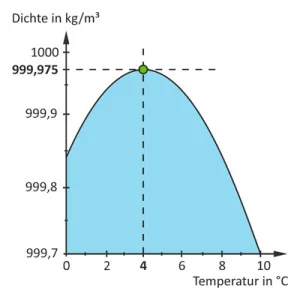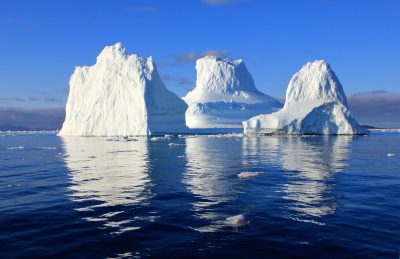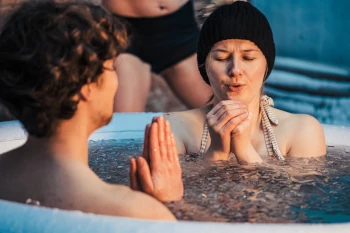When we talk about Cold Plunge , ice cream doesn't necessarily have to be in the water. However, there must be a certain cold to speak of Cold Plunge or Cold Plunge , because showering as a cold shower is not enough to put the body into the necessary shock state and to develop advantages of the Cold Plunge S.
Table of contents

Official Cold Plunge at a temperature of 5 ° C and below
Under Cold Plunge inevitably presenting ice cream that must be sawn or drilled beforehand in order to be able to climb into the water at all. This is not correct, because Cold Plunge or ice swimming begins from temperatures of 5 degrees Celsius and below . This guideline also applies to many associations such as ISA, which wrote down association guidelines
However, do not be put off by the temperature, and not everyone has a thermometer with you to measure how cold the water is. If you shower cold in Germany at home, the water has an average temperature of approx. 15 degrees Celsius. That already feels cold for you, but Cold Plunge should be colder than your shower at home.
Below you will find a table with a few temperature boundaries that you can take into account:
| Water temperature | Description |
| 13 - 15 ° C | Cold shower can be somewhat uncomfortable at the beginning, but you get used to the cold stimulus within about 30 seconds. No hypothermia possible. The easiest way to incorporate into everyday life as a changing shower and stop cold. |
| 10 - 12 ° C | Light Cold Plunge pleasant temperature, depending on the duration, no special knowledge required. Can also be reached in the bathtub alone with a little ice from the freezer. |
| 6 - 9 ° C | Medium Cold Plunge of decent cold stimulus and good feeling afterwards. Essential after the middle ice pool. Most of the cold plunger in Germany are probably to be met in this cohort, since the lakes and rivers can easily fall into this temperature range in winter. |
| 3 - 5 ° C | Official Cold Plunge temperature with 5 ° C water temperature and below qualified for official participation in ice swimming events. Here as a rule of thumb, the number of minutes remains inside, which has the water temperature. Strong hypothermia can be the result of excessive Cold Plunge under these conditions. |
| 0 - 2 ° C | Siberian Cold Plunge everything with 2 ° C and underneath is painful and you are very easy to cool down. Typically, the water is a mix between ice and water at these temperatures, you have to be careful not to cut yourself. Under no circumstances get your head and hair wet. |
If you are interested in how long Cold Plunge is good and healthy for you, you can read this in our other article. The rule of thumb for this is: Number of degrees Celsius = number of minutes in the ice water.
How are density and volume related to water?
But let's take a closer look at the medium of water. It is a very unique element with many interesting forms. When you speak of density, one means the molecules, in this case the water molecules, which are closer together at high density than with low density. If the molecules are denser together, the element is even the hardest, since there is simply more mass in the lower space. Volume means the expansion of the fabric, so how much space does the fabric occupy at what temperature. These two forms are particularly important if you want to explain the behavior of water better and go hand in hand.
At 4 ° C the highest density and the smallest volume
Water is a very special element of which you can find in any other element. At 4 degrees Celsius it has its highest density and its smallest volume. This means that the water molecules are the most densely together at this temperature and that water is the hardest at 4 ° C. When water cools down below 4 ° C, it contradicts it again and the density decreases again. The volume stretches out of below 4 ° C and the water becomes easier again. Very easy to see in the diagram below. The density also decreases over 4 ° C and the volume increases.

This is the peculiarity of water compared to all other substances, because it would be normal that the density (weight) of the molecules is higher the colder the substance. So this is an anomaly that we got used to and which you also lose sight of every now and then.
As a result, ice cream, i.e. water at 0 ° C, has a lower density and is correspondingly lighter than water. As a result, huge icebergs can swim on the water surface because they are lighter than the water in which the iceberg is located.

How does that comment in your everyday life?
The phenomenon can be experienced in concrete terms if you put a closed bottle of beer or water in the freezer and risk it that it bursts because the volume of the liquid in the bottle increases when the liquid is cooled below 4 ° C.
The explosive effect of water can of course also be used positively, for example this is used in agriculture for explosion and thus better ventilation of the soils in winter.
Warm in summer and cold at the bottom, exactly the other way around in winter
To get back to Cold Plunge : When the temperatures go down in winter, the water is pushed up with the lowest density (since it is easier). So water with a temperature of less than 4 degrees rises, water with temperatures of more than 4 degrees Celsius drops. So it is warmer below and the lake freezes from top to bottom .
This means that you have to take into account the Cold Plunge in the lake, especially in winter, that the warmer water is below. So it may be that only a very thin layer is frozen at the top that you could easily break through if you are careless.








So on the subject of water temperature from the shower: so I also get out of 7-8 degrees, of course not immediately. So it is definitely worth measuring. With a friend who lives a little further away, that's 13 degrees.